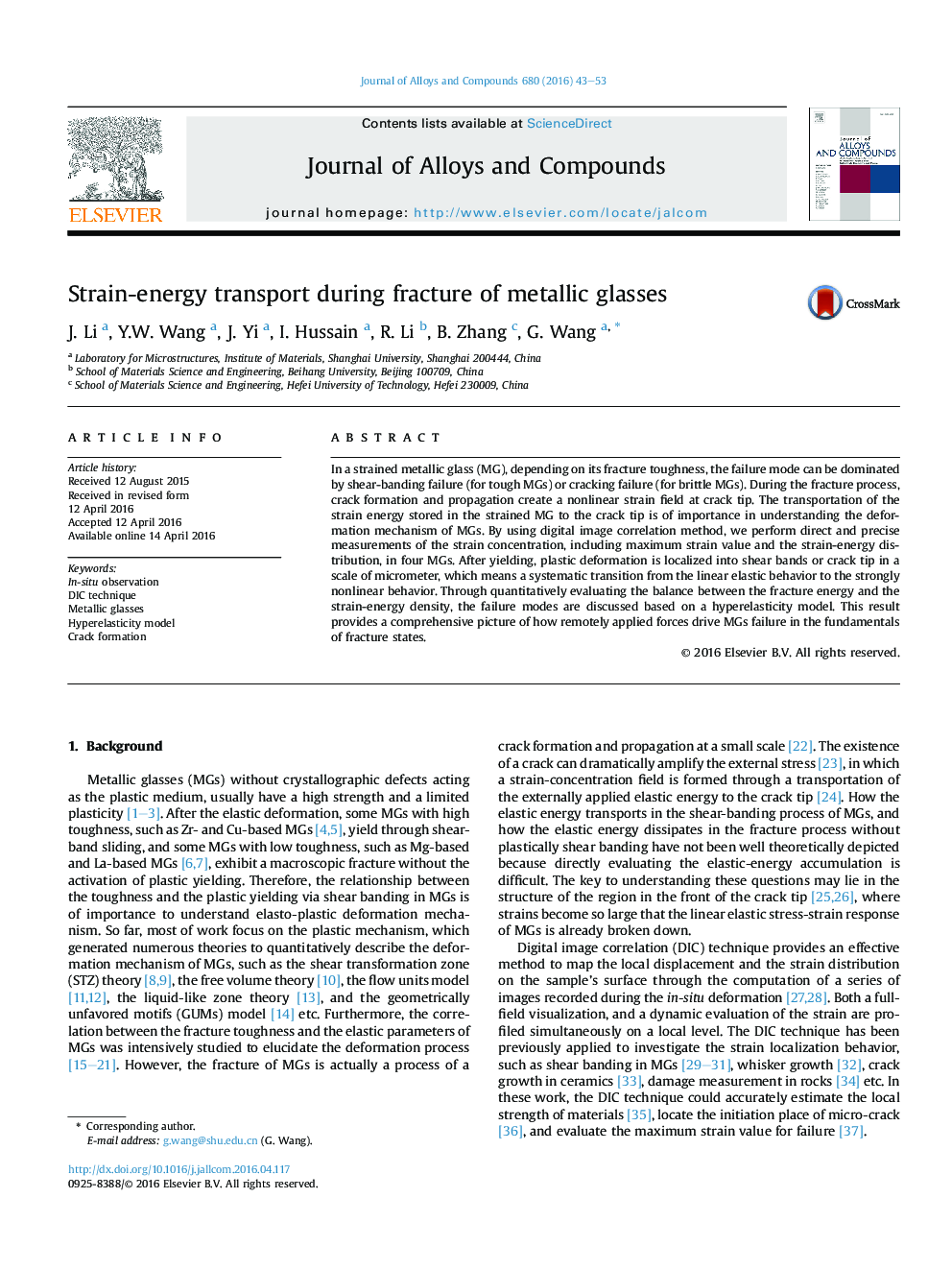| Article ID | Journal | Published Year | Pages | File Type |
|---|---|---|---|---|
| 1605321 | Journal of Alloys and Compounds | 2016 | 11 Pages |
•In-situ observing the elastic-strain field evolution with the stress in metallic glasses.•The relationship between elastic-energy density and fracture energy is discussed.•The failure modes of metallic glasses are discussed based on a hyperelasticity model.
In a strained metallic glass (MG), depending on its fracture toughness, the failure mode can be dominated by shear-banding failure (for tough MGs) or cracking failure (for brittle MGs). During the fracture process, crack formation and propagation create a nonlinear strain field at crack tip. The transportation of the strain energy stored in the strained MG to the crack tip is of importance in understanding the deformation mechanism of MGs. By using digital image correlation method, we perform direct and precise measurements of the strain concentration, including maximum strain value and the strain-energy distribution, in four MGs. After yielding, plastic deformation is localized into shear bands or crack tip in a scale of micrometer, which means a systematic transition from the linear elastic behavior to the strongly nonlinear behavior. Through quantitatively evaluating the balance between the fracture energy and the strain-energy density, the failure modes are discussed based on a hyperelasticity model. This result provides a comprehensive picture of how remotely applied forces drive MGs failure in the fundamentals of fracture states.
